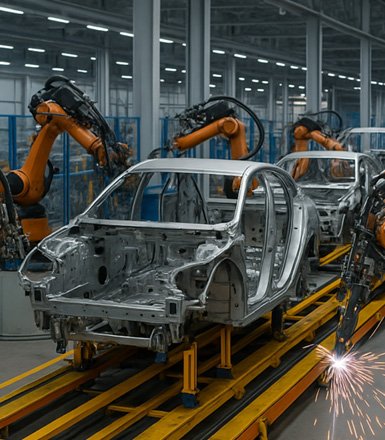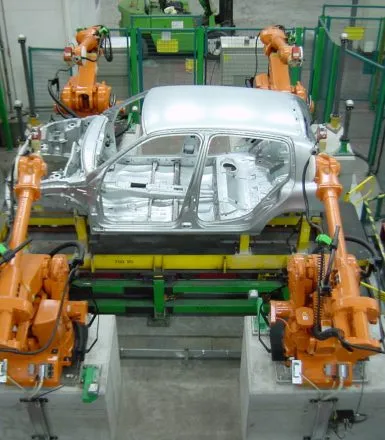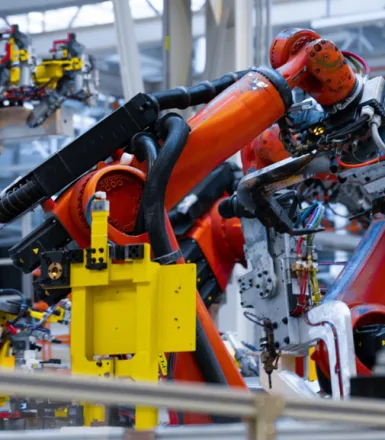No Touchup Defined
“No Touchup” refers to a scenario where a robot’s program, once created and implemented, operates perfectly without requiring further adjustments or manual corrections.
Aspects of No Touchup:
- Initial Accuracy: The robot’s program, developed offline or directly on the robot, is expected to work accurately and efficiently immediately without requiring additional fine-tuning or adjustments after deployment.
- Effective Simulation: The offline programming process involves creating and testing the robot’s tasks and movements in a simulated environment. For a program to be “no touchup,” the simulation must closely replicate the working conditions, ensuring that the virtual program translates seamlessly to the real-world application.
- Precision in Programming: Achieving “no touchup” requires high precision in both the programming and the setup. This involves meticulous planning and testing to ensure that the robot’s movements and tasks are executed as intended without errors.
- Consistency and Reliability: The term emphasizes that programmed actions should consistently produce the desired outcomes without manual intervention to correct issues. This is crucial for maintaining efficiency and minimizing downtime in automated processes.
Benefits of No Touchup:
- Increased Efficiency: Reduces the need for on-the-fly adjustments and manual corrections, leading to smoother and faster deployment of robotic systems.
- Minimized Downtime: By eliminating the need for touchups, the robot can operate continuously and efficiently, improving overall productivity.
Challenges and Considerations:
- Accurate Modeling: The success of achieving “no touchup” depends on how well the robot’s behavior is modeled and simulated. Any discrepancies between the simulated and natural environments can lead to issues.
- Complex Environments: In complex or dynamic environments, it may be challenging to account for all variables in the offline programming phase, potentially leading to adjustments.
- Tool and Environment Changes: Variations in the robot’s tools or the operating environment may affect the program’s performance, even if it was initially flawless.
In summary, “No Touchup” in robotics means that a robot’s program, whether developed offline or online, is expected to function correctly without the need for further adjustments. Achieving this involves precise programming and effective simulation, improving efficiency and reducing operational downtime.
The meaning of Offline programming without touchup
Offline programming with no touchup means developing a robot’s program in a virtual environment and ensuring it works flawlessly when transferred to the real robot, minimizing or eliminating the need for manual adjustments during actual operation.
Offline programming without touchup is a method of robot programming where the robot’s movements and tasks are programmed in a simulated environment or using a software tool. After programming, the instructions are implemented directly without requiring any manual adjustments or corrections on the actual robot.
Here’s a breakdown of the concept:
Offline Programming:
- Simulation-based offline programming involves creating and testing robot programs in a virtual environment or simulation. This can be done on a computer or through specialized software that mimics the robot’s behavior and workspace.
- Pre-Programming All the robot’s paths, movements, and actions are defined and optimized before the program is ever uploaded to the physical robot. This allows for thorough testing and refinement without interrupting actual production.
No Touchup:
- Direct Deployment: When a robot program is referred to as having “no touchup,” it means that the program, once created offline, is expected to work correctly on the first attempt without needing manual corrections or adjustments on the actual robot.
- Accuracy and Precision: Achieving “no touchup” implies that the offline programming has been done with high precision and accuracy and that the virtual simulations closely match the physical environment and robot behavior.
Benefits:
- Efficiency: It reduces the time required for programming and adjustments on the shop floor, as most of the work is done in advance.
- Minimized Downtime: Since programming and simulation are done offline, the robot’s operational time is maximized, reducing downtime for reprogramming.
- Reduced Errors: By carefully simulating and testing programs offline, the likelihood of errors during actual operation is minimized, which can enhance productivity and reduce costly mistakes.
Challenges:
- Complexity of Simulation: Achieving accurate results without touchup depends on the quality and precision of the simulation environment. Any discrepancies between the simulated and actual environments can lead to issues.
- Environmental Variables: Factors like changes in the physical workspace, tool wear, or unanticipated interactions may affect the robot’s performance, even if the program was perfect in simulation.




